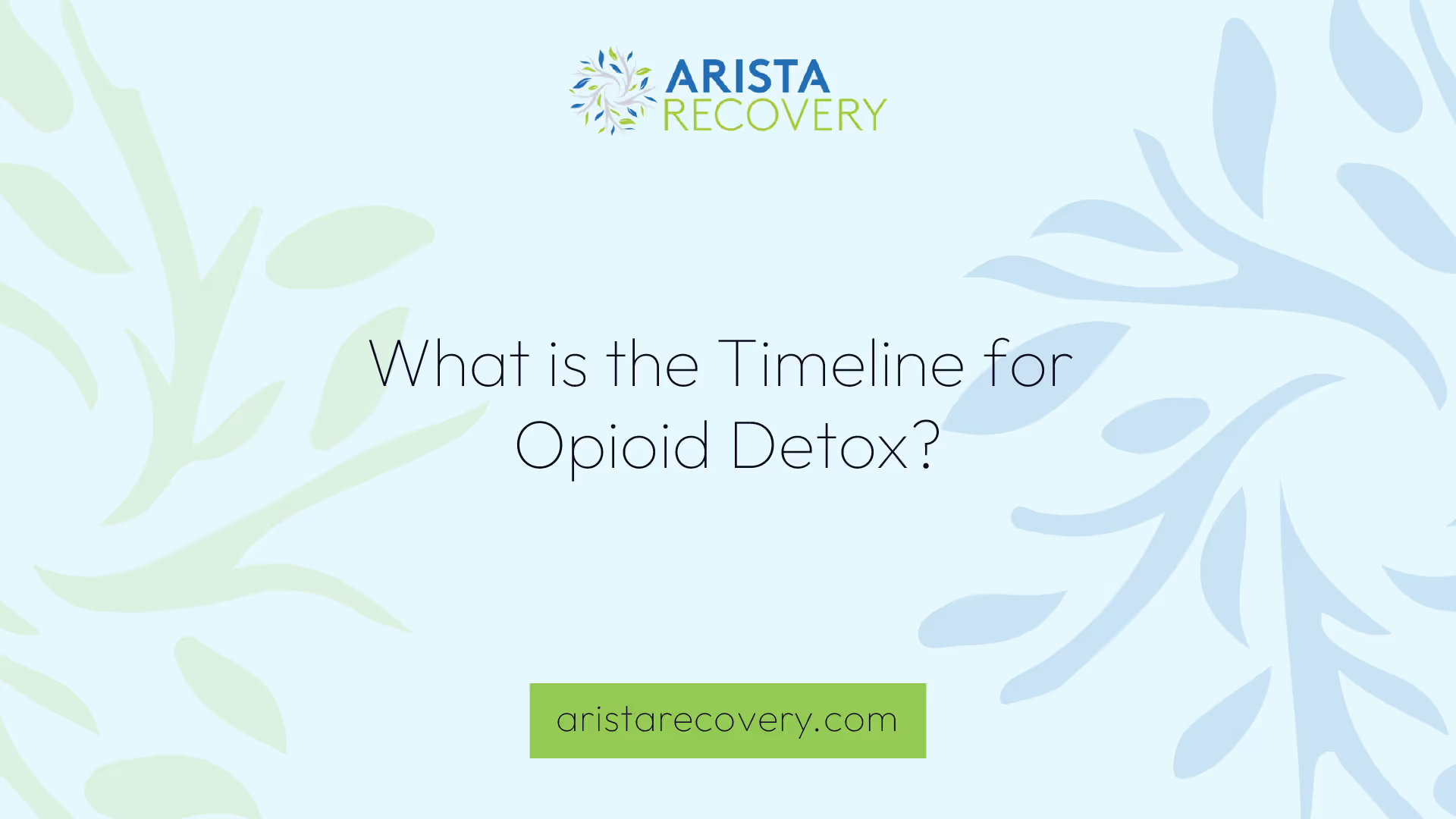What is the Timeline for Opioid Detox?

For those looking to address their opioid addiction, the number one concern is withdrawal. When people stop using these medications, the symptoms of withdrawal from opioids are often painful and uncomfortable. To safely navigate opioid withdrawal, users must undergo proper medical detox. While detox is effective and minimizes pain and discomfort, the timeline for opioid detox is not cut and dried. Often, the unknowns regarding the timeline for opioid detox prevent some people from getting the help they need to beat opioid addiction once and for all.
In this article, we will discuss the addictive nature of opioids and their withdrawal symptoms. We will also discuss the general timeline for opioid detox. Detox is the first and most crucial step you take on the road to long-term recovery. Arista Recovery features quality detox programs in Kansas that allow you to rid your body of opioids in a safe and comfortable environment. Call us today to learn more.

Are Opioids Addictive?
Opioids are a class of medications that are highly addictive and potentially dangerous to your health. When taken, opioids break the blood/brain barrier and release enormous amounts of endorphins in the brain. Endorphins are neurotransmitters that act on the brain’s reward centers and block pain messages while boosting feelings of relaxation and euphoria. Once the medications wear off, users are likely to take more opioids in order to get those good feelings back.
As opioid use increases, the brain slows the production of endorphins. The increased tolerance to these medications forces users to take higher dosages in order to achieve the same effect. Eventually, the brain quits producing endorphins altogether. As a result, users need opioid drugs in order to function on a daily basis. This behavior leads to opioid dependence and, eventually, opioid addiction.
Why Are Opioids Commonly Abused?
Opioid medications are only effective when carefully prescribed and taken in the short term. When used as part of a comprehensive pain management program, opioids are extremely effective in helping people manage the pain associated with surgical procedures, injuries, and diseases such as cancer. However, these medications are extremely potent, and people can easily become dependent on opioids. In general, opioids are commonly abused because people take these medications for more extended periods of time. The intense pleasure people feel from opioids can force them to keep taking them long after their pain has subsided.
If people become dependent on opioids, they may start stealing others’ medications or engage in a doctor-shopping practice where they will go to multiple doctors to get opioid drugs. Additionally, people will continue using these drugs because of the harrowing effects of withdrawal symptoms. Many opioid withdrawal symptoms are very painful and uncomfortable, and many users will continue to take these medications to avoid withdrawals—even though opioid drugs pose tremendous dangers to their health.
What Are the Symptoms of Opioid Withdrawal?
The symptoms of withdrawal from opioids can differ depending on the person, the types of medications abused, the length of time, the dosages, and underlying medical issues. The common symptoms associated with opioid withdrawal include:
- Anxiety
- Insomnia
- Runny nose
- Sweating
- Abdominal cramping
- Diarrhea
- Dilated pupils
- Nausea
- Vomiting
These symptoms can be amplified if users are abusing multiple opioids or taking other substances.
What is the Timeline for Opioid Detox?
The timeline for opioid detox is dependent on the type of opioid that the user is abusing. Short-acting opioids such as codeine, heroin, OxyContin, and morphine usually produce withdrawal symptoms 8-24 hours after the last dose, peak within 1 to 3 days, and will last for approximately ten days. Long-acting opioid medications such as fentanyl can see initial withdrawal symptoms lasting up to 36 hours after the last use and continue for two weeks or even longer.
As already stated, the length of the opioid withdrawal timeline depends on numerous factors. No matter the factors, it is important to seek an opioid treatment program that features quality medical detox. Through medications and other interventions, users can safely withdraw from opioids and be monitored around the clock by experienced medical personnel.
Call Arista Recovery Today!
Opioid detox is the most important step in the recovery process. As one of Kanas City’s top-tier addiction treatment centers, Arista Recovery features opioid detox programs in a safe and secure environment. We utilize appropriate interventions during the detox process for you to achieve physical and mental stability. Through the use of medications and holistic interventions, our detox program restores your health and prepares you for the intensive treatment you need to overcome opioid addiction.
Call Arista Recovery today and take your first confident steps toward recovery.
You’re not alone in this.
When mental health challenges and addiction intersect, it can feel isolating. At Arista, we offer compassionate, evidence-based, and trauma-informed care to help you heal, grow, and move forward.
You’re not alone in this.
When mental health challenges and addiction intersect, it can feel isolating. At Arista, we offer compassionate, evidence-based, and trauma-informed care to help you heal, grow, and move forward.
Support that moves with you.
You’ve taken a brave first step. At Arista Recovery, we’re here to help you continue with best-in-class care designed for long-term healing and support.
.webp)






